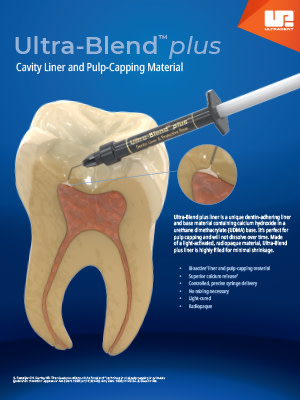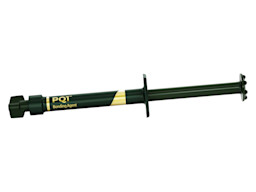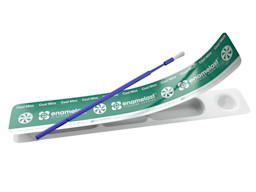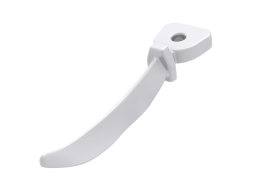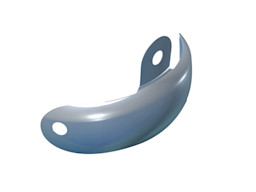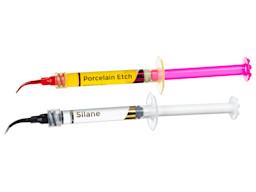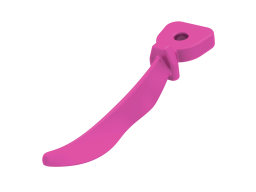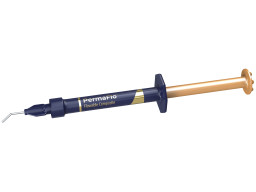Free Standard Shipping on All Orders $285+
Instructions for Use (IFU)
Safety Data Sheets (SDS)
Product Allergens
See any common allergens this product may contain >>Price breaks are offered on most items...
This amount is an estimate based on retail price. The actual amount due (shown at the final stages of your order) may be different from what is displayed here.
Return Policy
Items returned within 30 days of purchase with a return authorization number on the outside and inside of the return box will be credited 100%. Product returned between 31 and 60 days from purchase date is subject to a 20% restocking fee. Ultradent will not accept returns after 60 days. Errors in shipment must be reported within 14 days of invoice date. All return authorization numbers become invalid 90 days after date of issue. A return authorization number must accompany all returns to receive proper credit. Please contact Customer Service at 800.552.5512 for assistance.
Limited Warranty
Ultra-Blend plus liner is a light-activated, radiopaque material with calcium hydroxide in a urethane dimethacrylate base. It’s perfect for pulp capping and will not dissolve over time. Ultra-Blend plus liner is highly filled for minimal shrinkage.
- Bioactive1 liner and pulp-capping material
- Superior calcium release2
- Light curable
- Controlled, precise syringe delivery
- No mixing necessary
- Will not dissolve over time
- Radiopaque
- Highly filled
- Use with Black Micro™ Tip and Black Mini™ Tip
- Certified gluten free




Technical Details
Gluten Free
This Ultradent product is certified gluten free, so it fits in with the lifestyles of patients from any background.
Sold Directly to Licensed Dental Professionals Only
Ultradent is committed to supporting the dental community. It’s important for dentists to ensure their patients understand the Ultra-Blend plus procedure, have realistic expectations of the outcome, and have an enjoyable experience so they are pleased with the final result.
Made in the USA
Ultra-Blend plus material, tips, and syringes are manufactured at Ultradent’s facility in Utah. By purchasing products manufactured in the USA, you’re supporting our nation’s economy, and you’re helping to provide jobs for hundreds of Americans who take pride in what they do. Buying from a USA company like Ultradent also means you’ll get fresh formulations direct from our facility—not a product that may have been held up or delayed by a third-party.
Procedures
Ultra-Blend™ plus Liner Application:
See Instructions for Use for complete instructions, warnings, and precautions.
Step 1

Small Exposure
Use Ultra-Blend plus liner near pulp (pink) and for small nonhyperemic exposure. For larger exposure and/or hyperemic pulp, endodontic therapy should be considered.
Step 2

Consepsis™ Solution
Apply Consepsis™ antibacterial solution with plastic Blue Mini™ Dento-Infusor™ or Black Mini™ Brush tip for 60 seconds. Let sit. Do not scrub. Air dry.
Step 3

MTAFlow™ Cement
Optional: If the exposure is larger than a pinhole, apply MTAFlow™ cement onto and slightly around the pulp exposure. Remove excess material with a dry cotton pellet. When pulpal floor is clean and dry, place Ultra-Blend plus liner, overlapping slightly onto sound dentin to maximize surface area for dentin bonding. If the pulp is hyperemic, endodontic therapy should be considered.
Step 4

Ultra-Blend plus Liner
With Black Micro™ tip, apply Ultra-Blend plus liner to dry dentin for direct or indirect pulp caps and light cure. Minimize dentin coverage to maximize available dentin for bonding.
Step 5

Ultra-Etch™ Etchant
Apply Ultra-Etch™ 35% phosphoric acid etchant solution for 15 seconds. Suction, rinse, and dry until damp. NOTE: If desired, apply Consepsis solution prior to bonding, then place again for 60 seconds. Dry until dentin is slightly moist and proceed to the bonding agent.
Step 6

Dentin Bonding/Peak™ Universal Bond Adhesive
With the Inspiral™ Brush tip, apply Peak™ Universal Bond adhesive, paint onto enamel and scrub into dentin for 10 seconds. Air thin at half pressure for 10 seconds and light cure for 10 seconds with the VALO™ curing light on Standard Power mode. Restore with a quality composite.
Testimonials
“Ultra-Blend, used with Black Micro tips, is the most efficient method for protecting pulp.”
Dr. Sheldon Boruchow – Audubon, PA
“Ultra-Blend has been working well and is easy to use compared to other products.”
Dr. Suzette Nikas – Carmel, IN
“We have been using Ultra-Blend on a daily basis. I use it primarily in deeper cavities as a liner and insulator. The syringe makes it easy to dispense the material, and it hardens quickly with the curing light. It is reliable and has adequate adhesion. I think all of Ultradent’s products are excellent.”
Dr. Terry Braun – Ocala, FL
“Ultra-Blend application is easy!”
Dr. Mimi V. Johnson – Bellwood, IL
Frequently Asked Questions
-
Does Ultra-Blend plus liner release calcium?
Yes, internal testing shows that Ultra-Blend plus liner does release consistent, sustained amount of calcium over the time.2
-
What type of formula is Ultra-Blend plus liner?
It is calcium hydroxide and calcium hydroxyapatite in a urethane dimethacrylate (UDMA) base.
-
Does Ultra-Blend plus liner require a bonding agent for pulp capping?
No, it does not require a bonding agent for pulp capping. When used as a cavity liner or base, it does require the use of additional bonding steps. Full details are listed in the product instructions.
Brochures
Customers Also Bought
- 1. Pameijer CH, Stanley HR. The disastrous effects of the "total etch" technique in vital pulp capping in primates [published correction appears in Am J Dent 1998 Jun;11(3):148]. Am J Dent. 1998;11:45–54.
- 2. Data on file.

